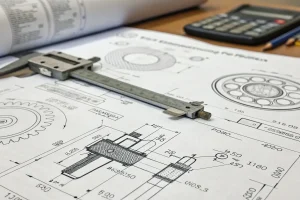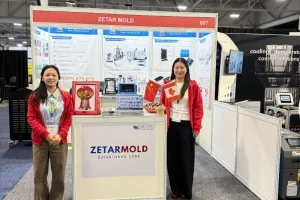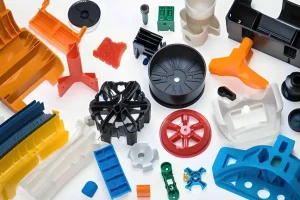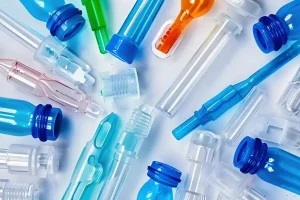Introduction: Plastic injection molding stands as a ubiquitous manufacturing process essential for crafting a multitude of plastic parts and products. From whimsical toys to precision automotive components, its influence resonates across diverse industries, molding the contours of contemporary manufacturing. In this blog post, we will navigate the complexities of plastic injection molding, unraveling its methodology, versatile applications, and inherent advantages.

Understand Plastic Injection Molding
Plastic injection molding commences with the melting of plastic resin pellets, which are then injected into the mold cavity under high pressure. After the plastic cools and solidifies, the mold opens to unveil the final product. This cycle can be repeated numerous times to precisely mass-produce identical parts.

Plastic Injection Molding Material Selection
Various plastic materials exhibit differing molding effects in injection molding. Typically, commonly utilized plastic materials for injection molding encompass the following:

Polyethylene (PE)
Polyethylene is a versatile thermoplastic known for its exceptional cold resistance, corrosion resistance, processability, and formability. Due to these properties, polyethylene is extensively utilized in injection molding for producing a diverse range of everyday items, plastic barrels, containers, and additional products.

Polypropylene (PP)
Polypropylene is a frequently used thermoplastic known for its high temperature resistance, chemical resistance, and excellent fluidity. Due to these attributes, polypropylene is extensively utilized in injection molding to produce items like automotive components, beverage bottle caps, and medical devices.

Polycarbonate (PC)
Polycarbonate is a high-performance plastic known for its exceptional transparency, cold resistance, and robust mechanical strength. These qualities make it a popular choice for injection molding applications in the production of items like automotive parts, display cases, and electrical housings.

Key Steps in Plastic Injection Molding
Mold Making
The initial step in plastic injection molding is creating the mold. Typically, the mold is made of steel and is crafted using CNC machining, milling machines, drilling machines, EDM, and other equipment. The completed mold undergoes numerous tests during the debugging process and requires constant adjustments until it achieves optimal performance.

Raw Material Selection
The raw materials utilized in plastic injection molding typically consist of plastic particles. By employing various raw materials, products with diverse properties can be manufactured. The quality of the final product is directly influenced by the characteristics of the raw materials, underscoring the significance of material selection in the injection molding process.

Adding Materials, Heating
Place the selected raw materials into the hopper, then switch on the power to start the heater for both the hopper and the product. Allow the raw materials to melt and reach the necessary temperature. While heating, be mindful of maintaining the temperature within the ideal range to prevent any adverse effects on the final product’s quality.

Injection
Once the raw material has reached the necessary melting point, the molten plastic is injected into the mold cavity through the injection machine. It is essential to carefully monitor the injection speed, pressure, temperature, and other relevant parameters to guarantee the final product’s quality.

Cooling and Demoulding
After the injection is completed, the cooling process commences. The water circulation system within the mold is utilized to rapidly cool and solidify the product. The duration of the cooling process typically ranges from seconds to minutes, depending on the size of the product and the material used. Following the cooling phase, the mold can be removed and the product can be demolded.

Trimming and Painting
After demolding, products may exhibit issues like burrs and dents, requiring trimming. Following the trimming process, further enhancements such as spray painting can be conducted to enhance both the aesthetics and protective qualities of the product.

Plastic injection molding stands as a sophisticated manufacturing technique applied across various sectors, from plastic goods to automotive components. As technology progresses incessantly, injection molding machines undergo frequent upgrades to align with market needs and enhance production efficiency.

Plastic Injection Molding Post-Processing
Post-Processing and Shaping Process
Post-processing and shaping processing involve using various methods to correct and shape the material structure of plastic molded products after manufacturing. Common post-processing and shaping processes include:

Cooling and shaping: Cooling and shaping refer to the post-production treatment of polymer materials (such as polyethylene, polypropylene, etc.) after the products have been cooled, allowing them to attain the desired shape and structure. The process involves molding the product, then immersing it in cooling water to facilitate hardening and achieve the intended form.

Cooling and shaping: Cooling and shaping pertain to the post-treatment of polymer materials (such as polyethylene and polypropylene) after molding to achieve the desired shape and structure. The process involves immersing the molded product in cooling water to facilitate cooling and solidification.

Compression shaping, also known as hot press treatment, involves applying pressure and heat to the product while using a mold to achieve the desired shape and structure. The process entails placing the plastic product in a heating device to soften it, followed by shaping it through compression under pressure.

Practical Tips and Advice for Post-Processing
The appropriate shaping treatment method should be chosen carefully. Cooling shaping is ideal for thin-walled products, while heating shaping works well for films and sheets. Compression shaping, on the other hand, is best suited for solid and thick-walled products. It is crucial to select the right shaping method based on the product’s nature and specifications during production.

Pay Attention to the Styling Treatment Time and Temperature
The styling treatment time and temperature are crucial factors in achieving the desired styling effect. Inadequate processing time or incorrect temperature levels can lead to poorly defined shapes, while excessive processing time or high temperatures can result in deformation or damage to plastic products. Therefore, it is essential to carefully control the styling treatment time and temperature based on the specific properties and processing needs of the plastic material.

Selecting the appropriate shaping mold and pressure is crucial in shaping processing. The mold design should align with the shape and size requirements of the product, while the pressure applied must be suitable – not excessive or insufficient – to yield the optimal outcome.

Please pay attention to the cooling process after shaping: Once the shaping process is finished, the plastic products should be thoroughly cooled to prevent excessive cooling that could lead to increased internal stress in the products. This internal stress can affect the quality and service life of the products.

Applications of Plastic Injection Molding
For original equipment manufacturers (OEMs) in all industries, plastic parts are essential and cost-effective in product design and production. It is usually best to seek the material that offers the lowest cost, weight, and durability for creating the desired product. Plastic injection molding is a highly versatile manufacturing process crucial to developing products such as medical devices, automotive parts, and appliances.

In fact, plastics can reduce the weight of parts by 50%, produce less scrap, and form more complex shapes and geometries. Plastic injection molding is widely used in various industries, primarily including plastic components for custom faucet plumbing.There was a time when metal, ceramic, or concrete materials were used primarily for industrial and residential plumbing.

Today, although metal pipes, including copper and galvanized steel, are still commonly used, plastic pipe components are found to have superior quality and many valuable properties, including: corrosion resistance, low thermal conductivity, no reaction to chemicals, Cost and weight reduced.

Appliances
Appliance manufacturing is another industry that favors high-volume, highly repeatable manufacturing of plastic components for product production. Components such as gears, pulleys, pumps, racks, and trays are a few examples of plastic components in refrigerators, dishwashers, kitchen gadgets, etc. that offer increased durability and value.

Appliance manufacturing is an industry that thrives on high-volume, repeatable production of plastic components for various products. Gears, pulleys, pumps, racks, and trays are examples of such components used in refrigerators, dishwashers, and kitchen gadgets. These components enhance durability and value in appliances.

Electronics
When you consider electronics, wires and metal may be the first things that come to mind. However, the use of corrosion-resistant plastics plays a crucial role in enhancing the performance of electronic components. Plastic offers superior benefits in terms of safety and insulation compared to other materials.

Components in your television, computer mouse, and various other devices frequently incorporate parts manufactured through a plastic injection molding process. Key attributes of plastic components in the electronics sector include high resistance to voltages and temperatures without deterioration, outstanding insulation properties, robust dielectric strength, excellent thermal characteristics, design adaptability, and cost and weight reduction.

When creating parts for electronics, it’s essential to consider the cost-effectiveness and design flexibility of plastic injection molding. Plastics offer the advantage of reducing part weight by up to 50%, enabling the formation of intricate shapes, and generating minimal waste that can often be recycled.

The industry examples mentioned are merely a snapshot of the myriad applications that could leverage the benefits of injection molded parts. For mid- to high-volume thermoplastic components requiring repeatability, consistency, affordability, and reliability, injection molding stands out as the ideal solution.

Advantages of Plastic Injection Molding
The benefits of plastic injection molding encompass consistent quality, cost efficiency, and swift high-volume manufacturing. Moreover, injection-molded components exhibit exceptional stability, and their scrap materials can be recycled, contributing to waste reduction.
Ensures Consistency: All parts are produced using identical molds, guaranteeing uniform size across all parts.

Produce Nearly Identical Parts
Since all parts are created from a single mold, even components with intricate features or complex geometries maintain uniformity.
Reduce Cost
Injection molding allows for decreased costs per unit as production volume increases. Once the initial equipment and materials are set up, minimal labor or time is required for fabrication. This method proves to be the most cost-effective in plastic manufacturing, capable of yielding hundreds or thousands of parts daily.

Enhanced Production Speed
Unlike other manufacturing techniques such as CNC machining and 3D printing that necessitate extensive work on each individual part, injection molding involves injecting material into a mold and allowing it to cool to form the desired part (although certain parts may require secondary processing based on their specific application).
Moreover, incorporating mold cavitation (the quantity of empty shapes within a single mold) can further boost throughput. Nonetheless, it is crucial to bear in mind that this approach is effective only after the tool has been fabricated. The creation of tools extends the lead time for newly molded parts.

Beneficial Compatibility
Certain types of injection molding, like overmolding and insert molding, have the capacity to incorporate multiple materials to produce a unified part. It is believed that over 18,000 thermoplastics, thermosets, and elastomers are suited for use in injection molding, showcasing the simplicity of creating parts that are in harmony with the constituent parts they will engage with.

The capability to fabricate intricate parts cost-effectively: By injecting plastic into a mold, intricate parts can be mass-produced using this technique with minimal labor or time requirements.

Material Flexibility
Injection molding offers a wide range of plastics and additives, making it easier to find a material with the desired properties.

Stability
Injection molded parts are isotropic, resulting in solid and durable components that outperform certain 3D printed parts. This durability ensures a longer lifespan and reduces the frequency of replacements.
Material Recyclability
Injection molding promotes sustainability by enabling the reuse of discarded materials, thereby minimizing waste generation and reducing the necessity to purchase new materials.

Disadvantages of Plastic Injection Molded Products
Extended Molding Cycle
Plastic injection molding involves several steps, including mold creation and injection molding, resulting in a lengthy process cycle. This is particularly pronounced for intricate products, necessitating numerous injection moldings for completion, thereby prolonging the molding cycle. This protracted approach evidently fails to align with the requirements of clients with urgent product demands.

High Cost
Plastic injection molding necessitates multiple mold trials and mold creation, leading to an escalation in processing expenses. Particularly for small-batch customized products, the costs are elevated. Moreover, the expenses associated with injection molding machines and molds are substantial, further constraining the growth of small and medium-sized enterprises.

Environmental Pollution
Plastic injection molding entails numerous mold trials and mold making, leading to heightened processing expenses. This is particularly pronounced for small-batch customized products, where costs escalate. Moreover, the high costs of injection molding machines and molds act as a deterrent for the growth of small and medium-sized enterprises.

Product Performance Limitations
Plastic injection molded products have limitations that prevent them from achieving high strength, heat resistance, and corrosion resistance. Additionally, they face challenges in producing complex shapes due to restrictions on appearance. Despite being a prevalent processing method, plastic injection molding does have its drawbacks. Therefore, when selecting a plastic product processing method, it is important to carefully assess your specific requirements.

Conclusion
Plastic injection molding is a versatile and efficient manufacturing process that caters to various industries and applications. It remains a cornerstone of modern manufacturing practices due to its capacity to produce high-quality, intricate plastic parts in large quantities. Whether producing consumer goods, automotive components, or medical devices, plastic injection molding stands out as a leading innovative production technology.











